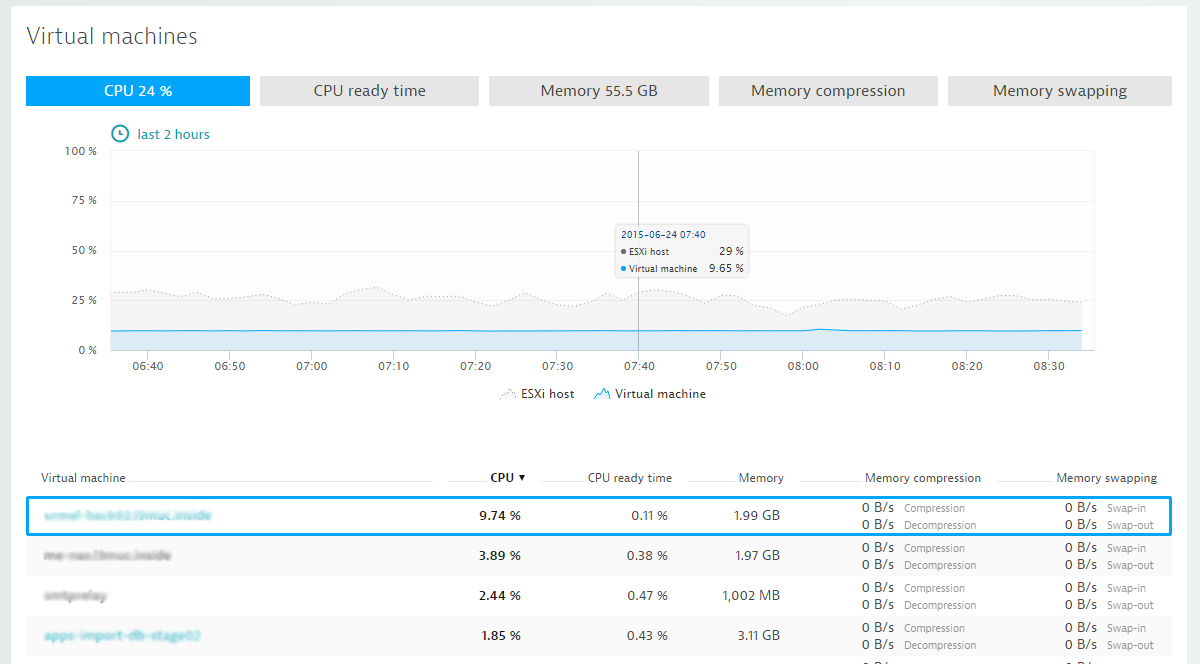30% of servers are sitting “comatose”. Out of personal experience, I’m pretty sure that one of the major reasons for that is how tedious it is to have your server’s load balanced accordingly. Why? Allow me to explain.
The bad part about capacity management and planning in the past was that it was tedious work collecting all the required host-related metrics. But those days are behind us. Have a look at this sortable table view of monitored-host metrics provided by Dynatrace:

Having the ability to sort your hosts (both virtual and physical) by metric type helps you to easily see if your infrastructure can handle more load. Having such detailed metrics at your fingertips is a simple first step toward knowing if your hosts are chronically overloaded or under-utilized. If you discover that your hosts are running at less than full capacity you may have the opportunity to save some money by, for example, automatic scaling of VM instances. On the other hand, if your hosts suffer from overload, their performance will be negatively affected. This leads to increased response times and, ultimately, lost revenue.
Know the differences between virtual and physical hosts
Virtual hosts can max out their allocated resources while the physical hosts they reside on sit largely idle with plenty of available capacity.

There are other reasons besides maxed out physical host resources that can cause a VM to sit idle. For example, a physical host may not be able to assign more resources to a VM because one or more other VMs have already claimed all the resources. In such cases, it’s important to keep a watchful eye on both your physical and your virtual hosts and have integrated metrics and graphs available for comparison. It’s no fun correlating these numbers manually though. Again, Dynatrace can save you hours of manual number crunching here.
Now, with all the tedious work behind you, you’re ready for …
The amazing part
The amazing part begins once you’ve mastered the challenge of identifying your potentially tunable hosts. For me, benchmarking and load testing applications and watching them utilize hardware resources is the really fun part. And with virtualization technology at hand, it’s easy to find out if your applications scale better horizontally or vertically.
When it comes to load testing, there are loads of tools available. Google can deliver a list of open source load testing tools if you’re interested:
Try us out
Give Dynatrace a try! Watch your environment under normal load, place some load on your infrastructure, and then see how your resource utilization changes. I’d love to hear your findings. Does your environment scale better horizontally or vertically? I’m looking forward to hearing your stories!





Looking for answers?
Start a new discussion or ask for help in our Q&A forum.
Go to forum